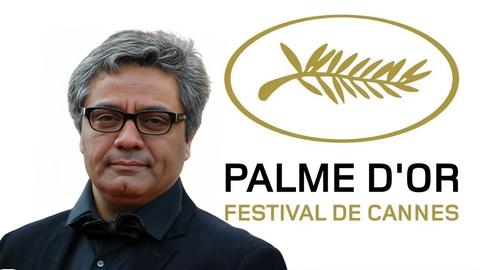An Iranian citizen journalist, who writes under a pseudonym to protect her identity, wrote the following piece on the ground inside Iran.
In early March, the “Practical Hijab Products” fashion exhibition debuted on Beheshti Street in northern Tehran. Among the outfits being showcased were the latest works by designers selected for the 2015 Fajr Fashion and Clothing Festival.
Although the term “practical” is cited across all the exhibition’s banners and posters, the stalls are, in reality, bursting with unconventional and impractical chadors —chadors with floral and colorful patterns, chadors with sleeves, and chadors with pockets. What’s more, they all have strange and unusual names, including Pearl, Reporter, Lebanese, and Tulip.
It is even possible to buy support leggings at these booths, an item of clothing that is frowned upon and viewed as un-Islamic by hardliners. It appears that damaging criticism in previous years have prompted the designers to emphasize the “practicality” of their clothing designs. But the organizers contest the controversial nature of the exhibition, saying the expo’s main focus is practical Islamic and Iranian hejabs.
The first Islamic-Iranian fashion exhibition, which featured 50 designs selected by a jury, took place in March 2010. The then Minister of Islamic Culture and Guidance, Mohammad Hosseini, attended its opening ceremony.
Then, on March 6, Tabnak news site said the exhibition displayed “costumes for show, not for wear.” It said that what “really grabbed one’s attention were mannequins wearing unusual costumes, which some visitors called ‘unfashionable’ or ‘inappropriate’.”
Not Fit for Outside, or for Parties
A Master’s student studying dress design told Tabnak that what she saw at the exhibition was “regrettable,” and that “some of the designs presented at the exhibition were so exaggerated that women couldn’t wear them in public in the city, whilst also not being comfortable enough to wear at parties.”
A walk around this latest exhibition of “practical” Islamic fashion and clothing demonstrates that even when large sums of money are being spent and exhibitions and festivals promote this clothing, the situation is much the same as it was in 2010.
This is despite the fact that last year, the Ministry of Islamic Culture and Guidance invested nearly $1.8 million to launch an organization called the National Islamic-Iranian Fashion and Clothing Foundation, which had the goal of “creating order in terms of the country’s clothing.” The ministry also created a working group with the same aim.
This is all part of the government and the regime’s attempt to control fashion and the clothing market for women in Iran. In this year’s budget bill, more than $7 million were earmarked for fashion and clothing, twice the amount from last year. However some people feel this is still not enough.
The budget “is not adequate for achieving the objectives of hejab and chastity,” says Ramezan Shojaei Kiasary, a member of the parliamentary Culture Commission. He believes the government should set aside an independent and routine annual event that seeks to acquire appropriate and acceptable clothing lines. The Minister of Culture, Ali Jannati, pledged to try to increase this sum “as much as possible.”
The problem is that the exhibition is not tempting for a person who does not like wearing the hijab. Furthermore, those who do like Islamic dress are put off by the exhibition’s odder designs.
The exhibition began on March 21, just 10 days before the start of the new Iranian calendar year. This is the busiest shopping season in Iran, as it is customary for Iranians to wear something new on New Year’s Day, which explains why the majority of clothing shops in Tehran were packed with customers. And yet, despite this, hardly any people could be found at the Practical Hejab exhibition.
Sanaz Kalantari, Citizen Journalist, Tehran
visit the accountability section
In this section of Iran Wire, you can contact the officials and launch your campaign for various problems





































comments